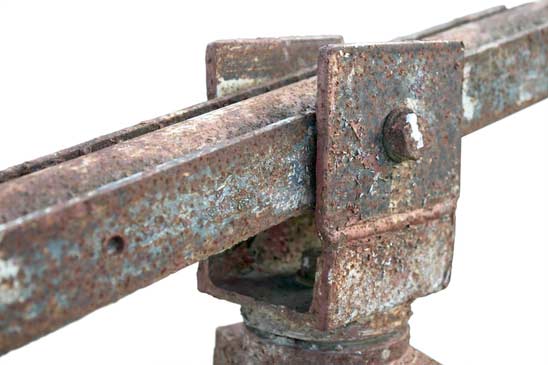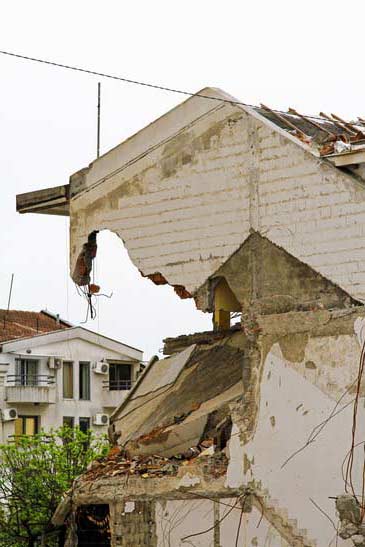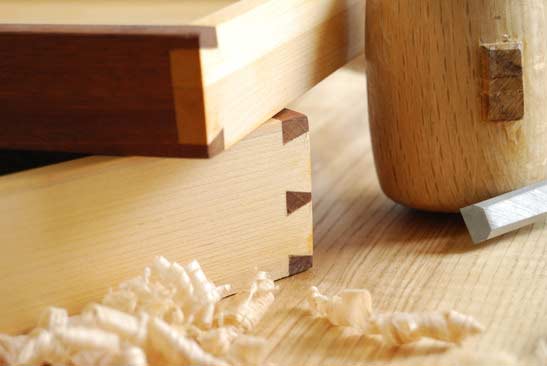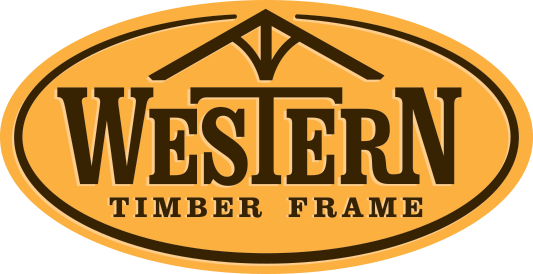No Need for Damper or Kinematic Mechanisms In Timber Framing

Corroded Metal Hinge
The fact that wood has the ability to expand, contract and move a little is more conducive to responsible architectural designs than other inelastic building materials.
The earth invariably has seismic vibrations or ground movement due to natural and sometimes artificial causes. An earthquake is the seismic of the earth moving on a more colossal, mammoth scale. The earth most often moves in shock waves moving up and down as well as side to side. A building or architectural structure will carry its own weight vertically (or it would fall down) by resisting the up and down loads. The greatest weakness in a building is in the lateral movement from side to side.

Earthquake Damage
It is extremely important to access the structural elements of steel, reinforced concrete or aluminum beams in its ability to maintain bearing resistance for its inelastic range. If the beams yield a little at their highest stress points without losing its resistance and the joints and weight of the columns hold full strength then the resonant frequency dampens out. Load bearing inelastic materials like reinforced concrete, steel, or aluminum beams are required by architectural engineers to install kinematic mechanisms to compensate for rigidness against the structural movement that will occur from the earth's movement.
There are several various load bearing dampers or bearings, each having their unique specific characteristics with advantages and disadvantages to structural applications. Some are also designed to help in compensating for the spalling (the breaking of materials from off of a solid body) that happens in regions of stress contact points from fluids, vapor bubbles and plate impacts subjected to localized low pressure.
Wood is not affected by temperature changes like other inelastic building materials and is less prone to condensation. Best of all, when properly engineered, the characteristics of wood give timber frame better seismic survivability than any other building material on earth. Wood and timber framing structures that date back thousands of years and are still standing strong. The properties of wood naturally dampens out the resonate frequency and does not require artificial mechanisms.
Additional Benefits Using The Dovetail System

Dovetail Joints in Wood
The dovetail has been discovered in the tombs of China's emperors and the entombed mummies from Egypt and throughout history. The dovetail joint does not require a mechanical fastener with its trapezoidal angled shape that interlocks with another angled board but it does take skill and accuracy to create a snug fit as it interlocks. The dovetail design works together with wood like a perfect fitting glove giving the timbers an even greater power to perform woods inherent ability to dampen resonate frequencies while maintaining the aesthetic appearance.
More related Posts from Timber Wise: Wood Rot - Questions & Answers



Leave a Comment